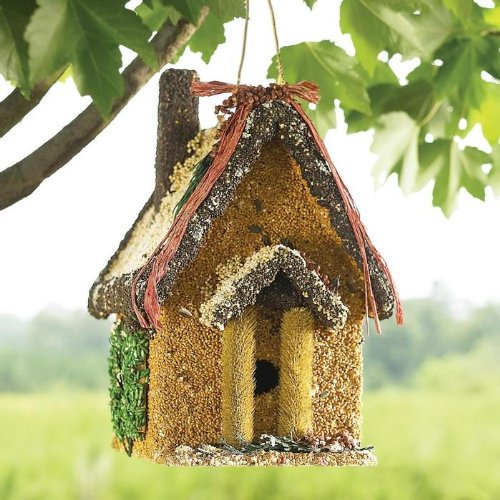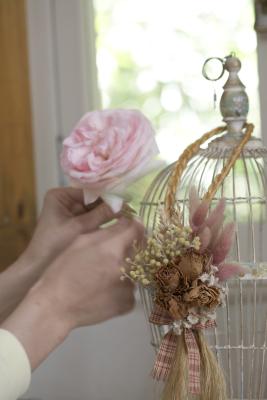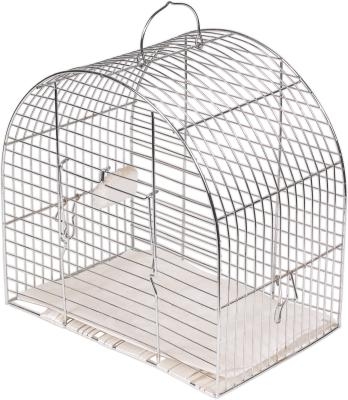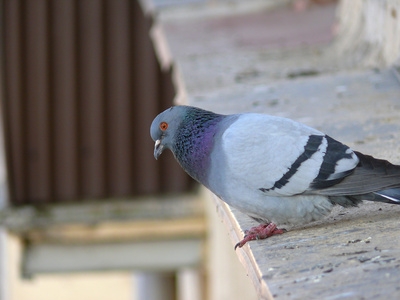Because of the many risks, hamster cannot live freely in the house, it is necessary to have a suitable home. Of course it could be made with your own hands but especially for beginners is preferred the cage and the rest accessories to be bought by some good shop.
It is important to have in mind that even small animals like hamsters need huge space. It is wrong to think that little hamsters as the dwarfs, for example, need less room, just the contrary, they are more active and in contrast to the average sized hamsters they cannot walk freely in the room.
When you buy the cage and its furniture you should be careful about avoiding the plastic ones although they are often offered in the shops, because hamsters gnaw everything when they have the opportunity and you know that the plastic is not healthy at all especially for the little hamster.
The best solution is the cage to be with metal transverses in order hamster to be able to climb up. The floor should be at least 7 centimeters high so that no shavings to fall down during the games. The Minimum size of the cage is 70/35/35 (length, width, height). The bigger the cage, the better. Gratings must be at maximum 1 centimeters distant. You won't believe how narrow holes hamsters can get through.
The place where the cage will be situated is also of essential meaning. The most suitable for the purpose is little but stable table or cabinet of about 65 centimeters so that hamster has a good visibility and feel secure. In addition to this, at least one of the walls of the cage (better both of them) should have a good visibility to the room and to be good lighted. The cage should be put directly to the wall or if it is in the middle one of its (the longer) sides must be covered with something in order the hamster feel secured. The temperature of the air in the room has to be between 18 and 26 degrees, the humidity about 40-70%, the illumination about 60 lux and also the cage must not be exposed to a direct sunlight, in the draught and next to heating devices.
There are two variants for the lodging of the little rodent. The most famous is the cage and the another one is a glass terrarium. Below you will find more information and explanations about both of them.
With the normal hamster cage you should be careful about the distance between the gratings not to be very big and also they not to be transverse so that the hamster to be able to climb up. This is of huge importance for golden hamsters because this race has a bigger longing for climbing. The maximum distance between gratings must not be more than 6-8 mm (for dwarfs - 4-6 mm) or otherwise the little animals can stick their head into them. Especially when there are cubs is highly recommended the mother and the babies to be moved into a terrarium. It is also better the gratings to be dark because
the light doesn't reflect back into them as for example if the gratings are white or silver and in this way you can better observe the hamster. Please have in mind that the gratings to be neither polished nor with any other cover. As the hamsters are rodents you cannot prevent them of gnawing wherever. Such varnishes are a big danger. Also it is very good if the cage opens from above or in front because this will facilitate not only the cleaning but also taking out of the hamster. But when you thrust your hand inside, be careful not to put it directly on the hamster because this could cause unexpected reactions from his side for most of his enemies attack from above. Besides the door should close well since the little climbers always look for a way to get out and where the head can pass trough, the whole body can do it. It is important the floor and the rest floors not to be fenestrated. A construction from such kind could be a real hell to the hamster because he can sick into it and affected very easy. Moreover this way of breeding could lead to cannibalism. The lower part of the cage which can have a depth of 10-15 centimeters is good to be able to separate from the upper one because this will make the cleaning easier. In the zoo there are also cages with several floors in which animals have more space for their necessities but it is also important to be sure that this is a cage for hamsters - these ones for guinea pigs, rabbits and birds are not suitable for normal breeding of hamsters (the gratings are widely separated and some of them have fenestrated floors and small holes).
Level with the possibility hamster to live in a cage you can use an aquarium or a glass terrarium for the same purpose. These "lodgings" are also offered in the zoo shops, some of them have a sliding front wall (very useful for cleaning) and netlike cover - the so called crisketinarium or a similar one only with a netlike or fenestrated cover. It is essential in such a "glass lodging" to have more stairs and other climbing devices. If you fix on aquarium or terrarium which are perfect for dwarf hamsters, it is recommended is the height to be at least 40 centimeters. These little creatures can jump higher than we think. With little skills you can make some kind of cover (for example of net) but even then it has to be at a considerable distance from the hamster (he always
finds the way up). Of course, in this case you can also place intermediate levels which will be a little bit more difficult than with the fenestrated cages. Besides the aquarium should be big enough in order to provide better air circulation. The biggest advantage of the of the glass cages is that the animal is better protected of noises and draughts and the shavings don't fall down.
Nowadays the best solution is the combination of the two variants or the famous crittertrail cage. It is the perfect alternative for those of you who wonder what to buy
for their pet.

 How to Make Edible Bird Houses That Double as Homemade Bird Feeders
If you love the idea of crea
How to Make Edible Bird Houses That Double as Homemade Bird Feeders
If you love the idea of crea
 Ways to Decorate a Bird Cage
Ways to Decorate a Bird Cage
Ways to D
Ways to Decorate a Bird Cage
Ways to Decorate a Bird Cage
Ways to D
 DIY: Metal Bird Cage
DIY: Metal Bird Cage
DIY: Metal Bird C
DIY: Metal Bird Cage
DIY: Metal Bird Cage
DIY: Metal Bird C
 How to Make a Bird Trap
How to Make a Bird Trap
How to Make a
How to Make a Bird Trap
How to Make a Bird Trap
How to Make a
 The Hamburg Chicken
Poultry BreedsThe Hamburg Ch
The Hamburg Chicken
Poultry BreedsThe Hamburg Ch